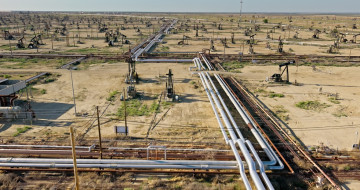In today’s complex and highly regulated energy environment, pipeline safety is more than a priority. For operators, API Recommended Practice 1173 (RP 1173) Pipeline Safety Management System (PSMS) is the underlying framework for safe and efficient operations. However, simply having a PSMS in place doesn’t inherently mean that it’s an effective one.
So, how can you be confident that your existing RP 1173 program is truly adequate and complete? A binder full of procedures may tick the compliance box, but it doesn’t guarantee your people are protected, your risks are managed, or your systems are continuously improving. The stakes are high: inadequate systems can lead to incidents, regulatory fines, operational disruptions, and reputational damage.
In this article, we’ll explore how to assess what adequacy and completeness really mean, how to evaluate your current system, and how Antea Group can help you move from good intentions to operational excellence.
Adequacy and Completeness: More Than Buzzwords
A truly adequate PSMS is one that’s fit for purpose. It goes beyond meeting the minimum requirements and actively supports hazard identification, risk mitigation, decision-making, and continuous learning. If your PSMS is only as strong as what’s written down, it likely isn’t adequate.
Completeness, on the other hand, means that all 10 elements of API RP 1173 are not only documented, but also implemented and regularly evaluated. These elements include leadership commitment, stakeholder engagement, risk management, operational controls, and more. They form an interconnected framework designed to manage pipeline safety.
It’s also important to remember that your PSMS should not be static. As your operations grow, regulations evolve, and lessons are learned, your system must adapt accordingly. What worked five years ago may no longer be sufficient today.
How to Evaluate Your RP 1173 Program
A meaningful assessment of your PSMS should follow a structured but flexible approach. First ask, why you are conducting the assessment? Are you preparing for a regulatory audit? Integrating a newly acquired facility? Responding to an uptick in safety incidents? Establishing your objectives upfront helps set the tone and scope of the assessment.
Next, dive into your documentation. Look beyond whether or not policies exist, focus on how they’re written, how often they’re updated, and whether they align with RP 1173 principles. Are procedures clear and actionable? Are responsibilities well defined? Are training records, incident reports, and audit findings telling a consistent story?
Paperwork only tells part of the story. To assess how well your PSMS is embedded in daily operations, get into the field. Observe real-world practices, talk to people at every level of the organization, and ask them how they apply key safety procedures. The responses will reveal a lot about culture, clarity, and adherence.
Data analysis plays a central role as well. Incident rates, near-miss reporting trends, training completion, and audit results all serve as indicators of performance. The key is not just collecting this data whether the data is being used to inform action and drive improvement.
After collecting this information, perform a gap analysis. Where does your current program fall short of RP 1173 expectations or industry best practices? Which issues pose the greatest risk to safety or compliance? Prioritize these findings based on impact and urgency, and then develop a set of clear, actionable recommendations. These should be specific, time-bound, and tied to accountable owners within your organization.
Finally, don’t overlook the importance of follow-up. Corrective action plans need more than approval, they need to be tracked, measured, and verified to ensure effectiveness. This step is often missed, but it’s critical to making lasting improvements and maintaining momentum.
When Should You Assess Your PSMS?
There’s not a wrong time to reassess your pipeline safety program, but certain leading indicators may make it especially urgent. If a rise in incidents or near misses is observed, or regulatory changes or expanding operations are expected, it’s time for a health check. Similarly, if safety performance metrics have plateaued or there’s confusion among staff about safety procedures, that can serve as a red flag that something isn’t working as intended.
How Antea Group Can Help
At Antea Group, we have deep expertise in EHS compliance and safety management systems, specifically in Energy and midstream operations. Our approach to API RP 1173 assessments is both comprehensive and practical. We combine desktop reviews with field verification, employee interviews, and detailed data analysis to evaluate not just what’s on paper, but what’s happening in your operations.
Our deliverables go beyond checklists. We provide clear gap analyses, prioritized action plans, and support for remediation so your team can move quickly from insight to implementation. Whether you’re just starting out or fine-tuning a mature system, we help make your PSMS a tool for resilience, not just a regulatory requirement.
A Final Word
Assessing the adequacy and completeness of your RP 1173 PSMS isn’t just an exercise in compliance, it’s an investment in safety, operational integrity, and long-term success. The most effective programs are those that evolve alongside your business, using real data and real experiences to improve every day.
If you’re ready to go beyond the checklist and ensure your system is truly robust, contact Antea Group today. Our team is ready to help you evaluate, improve, and elevate your pipeline safety management system to meet today’s challenges and tomorrow’s expectations.
Want more news and insights like this?
Stay in the loop with our monthly e-newsletter, The New Leaf. We’re here to keep you informed, enlightened, and entertained with the latest in EHS and sustainability. Don’t miss out on the insights and stories that matter to you!✨ Ready to turn over a new leaf? Sign up now!
Have any questions?
Contact us to discuss your environment, health, safety, and sustainability needs today.






